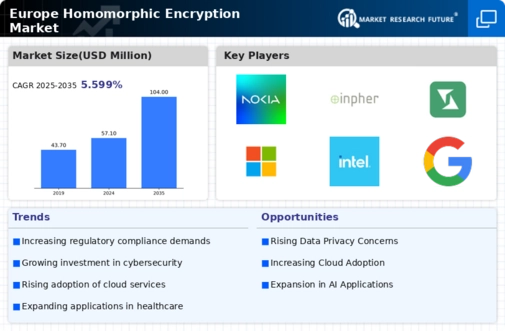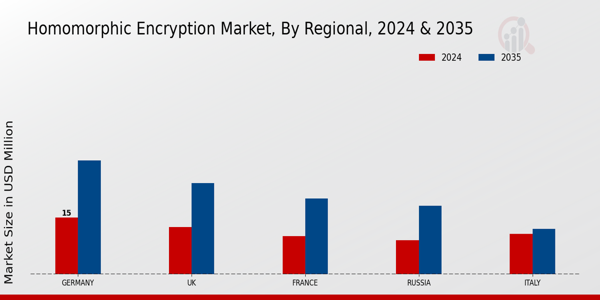The competitive landscape of the Europe Homomorphic Encryption Market illustrates a dynamic and growing sector with diverse players capitalizing on the increasing demand for secure data processing.
As businesses and governmental institutions prioritize data privacy and security, homomorphic encryption technology provides the ability to conduct computations on encrypted data without requiring access to the unencrypted information. This fosters trust and compliance with stringent data protection regulations prevalent in Europe.
The market is characterized by a mix of established technology firms and innovative start-ups, each striving to enhance their product offerings and gain a competitive edge. Collaboration, strategic partnerships, and investment in research and development are pivotal strategies employed by these companies to navigate the complexities of the rapidly evolving landscape of cryptographic solutions.
Nokia holds a significant presence in the Europe Homomorphic Encryption Market, primarily focusing on its advanced network infrastructure and security solutions. The company's strengths lie in its extensive experience in telecommunications and its commitment to innovation.
By leveraging its capabilities in secure communication technologies, Nokia is well-positioned to address the growing needs for data protection in various sectors, including finance, healthcare, and government.
The integration of homomorphic encryption into Nokia's offerings ensures that sensitive information can be processed securely across its platforms, thereby maintaining compliance with European data protection standards. Nokia's brand reputation, along with its significant investments in cybersecurity and encryption technologies, contribute to its competitive advantage within this market segment.
Inpher has also emerged as a notable player in the Europe Homomorphic Encryption Market, focusing on delivering cutting-edge privacy-preserving computation solutions. With its unique technology, Inpher enables data collaboration and analytics without compromising confidentiality, which has become increasingly crucial for organizations handling sensitive data.
The company boasts a portfolio of offerings tailored for various sectors, including finance and healthcare, which rely heavily on data security. Inpher's strengths include its robust encryption algorithms and its commitment to providing practical solutions that address real-world data processing challenges.
Furthermore, the company is actively engaged in strategic partnerships and collaborations to bolster its market presence in Europe. Inpher's focus on research and development highlights its dedication to continuous innovation, positioning itself well in an evolving landscape marked by growing concerns about data privacy and security.










